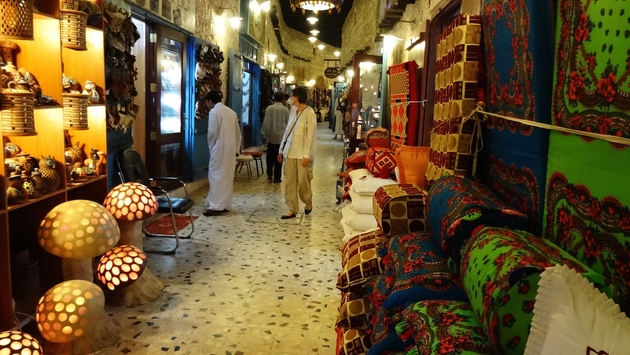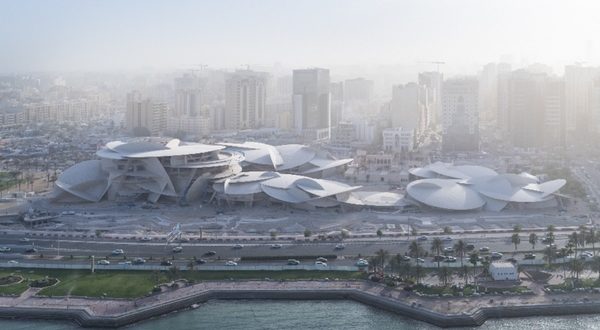[ad_1]
Qatar is a modern country with a sophisticated flair that is also forging a deep cultural connection, bringing the country’s history to life through its museums and the preservation of historic sites.
The country’s newest treasure is the National Museum of Qatar (NMoQ), which opened on March 28, 2019, and is one of the most exciting new opportunities for travelers coming to the country. The museum is a “desert rose” and truly connects visitors with the rich history of the country.
“Qatar is an ancient land, rich in the traditions of the desert and the sea, but also a land that hosted many past civilizations. While it has modernized its infrastructure, it has still remained true to the core cultural values of our times. We look forward to sharing new museum experiences with our proud and diverse communities, as well as welcoming international guests in the spring of next year.”
The museum is organized in three “chapters” that include the Beginnings, Life in Qatar and Building the Nation. There are 11 galleries that extend over 1.7 miles and chronicles the times before the peninsula was inhabited by humans all the way through the present day.
The design was created by Jean Nouvel and features an array of curved discs representing crystal clusters found in the Qatari desert known as “desert roses.” Galleries are made up of oral histories, archival images, artworks, music and storytelling, and evocative aromas add a sensory aspect to the immersive experience.
“Central to the vision of the Museum is intergenerational learning, for school children, for adults, for all, through our multi-layered thematic exhibits, interactivity and programming,” said Sheikha Amna bint Abdulaziz bin Jassim Al Thani, director of the National Museum of Qatar.
“At the core of the museum’s permanent exhibits and accessible to the public is a digital archive of thousands of images, videos, and documents from Qatar and abroad. And all these elements will be made accessible to as many people as possible.”
The Museum of Islamic Art
The national museum is Qatar’s most recent treasure but its art museum is another world-class collection. The Museum of Islamic Art (MIA) houses one of the leading collections of Islamic art in the world. A diverse array of artwork that features paintings, glassworks, metalwork, ceramics, textiles and manuscripts that cover several time periods, including Mughal and Safavid.
The building is a work of art in and of itself, designed by IM Pei, who won the 1983 Pritzker Architecture Prize.
Guests will find rotating exhibitions, temporary shows, indoor and outdoor cafes and IDAM, a restaurant run by a three-Michelin-star chef, Alain Ducasse.
Souq Waqif
Qatar has been a trading home since ancient times and another way to experience Qatar’s cultural traditions is to head to its central marketplace, Souq Waqif. Its maze of alleyways and unique architecture create an ambiance and a sense of place for visitors looking to connect with Qatari culture.
The soul is also a wonderful place to shop and discover unique souvenirs to bring home. Many people come to the market for carpets, rugs and textiles as well as Arabic coffee pots, antique silver, incense burners, prayer beads, inlaid jewelry boxes and other handicrafts.
Travelers can also venture outside of Doha to the port city of Al Wakra. Here, Souq Waqif Al Wakra offers a variety of restaurants and coffee shops and is open late into the evening.

Historic Sites
While museums are an ideal place to get to know the history and culture of Qatar and the region as a whole through the ages, travelers can get a glimpse of the past at the country’s historic sites.
The Barzan Towers, located in the suburbs of Doha, were recently restored. They were originally built between 1910 and 1916 and stand 16 meters high. They likely served as a lookout point to protect local water sources and as an observatory.
Al Wajba fort is also just outside of Doha and was constructed in the late 18th or early 19th century and was the site of a battle between Qatari forces and the Ottomans in 1893. It has also served as the residence for a number of sheiks.
Discovered in 1957, the Al Jassasiya rock carvings date back to Neolithic times. They consist of various patterns that represent cups in rows, rosettes, ships and footmarks. Travelers will find them on the northeast coast of the country.
[ad_2]
You can read more of the news on source
 Travelsmart
Travelsmart



